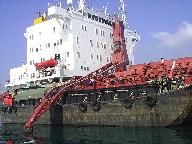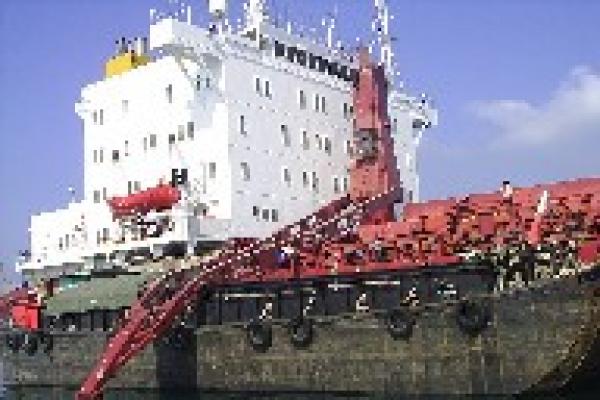
Steamship Mutual
Published: September 01, 2007
Image


In time charterparties, charterers bind themselves to pay hire in accordance with agreed payment obligations, although there are usually additional provisions which may entitle the charterer to treat certain periods of time as being off-hire.
Off-hire clauses can generally be separated into two distinct categories:
- The NYPE 1946 and Baltime forms contain “Net loss of time” off-hire clauses. This means that charterers may deduct from hire only if, following the occurrence of the qualifying off-hire event, the charterer has actually suffered a loss of time.
- In contrast, a “period” off-hire clause provides that the charterer can treat the whole of the period during which the qualifying event is in existence as off-hire irrespective of whether a loss of time has actually been suffered. Such clauses provide an element of certainty in that the existence of the qualifying event is a question of fact which, on the whole, is easy to define. Net loss of time clauses present difficulties because they require proof of loss of time. If a crane breakdown occurs, one can only make a reasonable calculation as to how long it would have taken to complete the cargo operations had the crane not broken down.
This was the background to a case recently referred to arbitration in London. The vessel was chartered on the NYPE 1946 form to carry a cargo of logs and timber from West Africa to the Far East. The vessel had 5 hatches and 4 cranes configured such that the middle 3 hatches would be served by two cranes and the outer 2 hatches served by one crane each. A breakdown of one of the outer cranes would mean no cargo could be loaded or discharged in the outer hatch that it served.
As a result of a crane breakdown a dispute arose as to how off-hire should be calculated. Owners contended that charterers could only be compensated for time actually lost, whilst charterers sought to be compensated on a period basis for all of the time that the breakdown was experienced.
As well as the net loss of time provision at clause 15 of the standard NYPE form, the subject charter contained the following two additional clauses.
Clause 23
… In the event of a disabled winch or winches, or insufficient power to operate winches, the hire is to be reduced pro-rata for period of such inefficiency in relation to the number of cranes available. However, should breakdown of cranes result in the Charterers being unable to work at a particular hold, the hire is to be reduced pro-rata for the number of hatches available. Owners to pay for shore engines/cranes in lieu thereof if required by Charterers, and to pay any loss of time occasioned thereby in which case vessel to remain fully on hire. …
Clause 57
CRANE TROUBLE
Owners warrant vessel’s cranes can serve all holds and all vessels cranes are in good working condition throughout the currency of the Charter Party. … Any time lost on account of breakdown or insufficiency of vessels cranes required for loading and/or discharging of the cargo to be treated as off hire proportionally according to number of vessels cranes working.
Any proven direct expenses incurred by Charterers resulting from such crane breakdown or insufficiency to be for Owners’ account.
Charterers contended that the reference to “any loss of time occasioned thereby” in clause 23 only applied in the context of owners having paid for and provided “shore engines/cranes”. In this case the owners had not provided such equipment and charterers argued that the net loss of time approach therefore did not apply.
Charterers further argued that the reference to “any time lost on account of breakdown…of vessels cranes” in clause 57 was inoperative because it was in conflict with the later reference to off-hire being calculated “proportionally according to the number of cranes working” which contemplates a pro rata period approach to the calculation of off-hire and which is contrary to charterers having to prove a net loss of time.
Owners submitted that all 3 of the off-hire clauses intended to apply a net loss of time approach, clause 15 referring to “time thereby lost”, clause 23 referring to “any loss of time” and clause 57 referring to “any time lost”.
The Tribunal held in favour of the charterers for the following reasons. First, the incorporation of clauses 23 and 57 specifically dealing with off-hire due to crane breakdowns meant that clause 15 had to be disregarded. This on the basis that typewritten clauses take precedence over standard printed clauses. Secondly, the Tribunal agreed with charterers that the reference to “any loss of time” in clause 23 had to be read in the context of owners having paid for and provided shore equipment, which they had not.
Thirdly, and crucially, the Tribunal held that the first part of clause 23, providing for a pro rata reduction in hire by reference to the number of cranes available was entirely consistent with the pro rata period approach set out in clause 57.
Accordingly, charterers could treat the period that the relevant crane had broken down in proportion to the number of cranes working as off-hire irrespective of whether cargo operations took longer than they would have had the crane not broken down.
This Award neatly encapsulates the differences between the two common approaches to calculating off-hire periods and serves as a reminder to owners and charterers alike to take care to agree clearly-worded off-hire clauses to avoid uncertainty.


